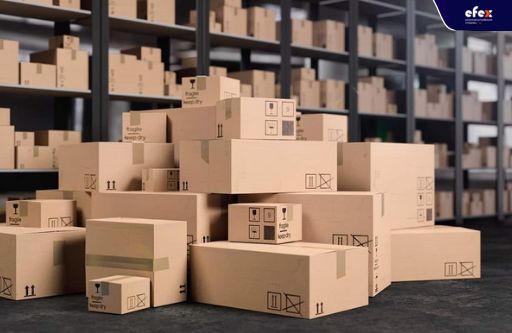
More Helpful Content
The phrase "hedging" refers to a value investing strategy that all investors should be aware of. Hedging is frequently described in broader terms than its explanations. It is not, nonetheless, an uncommon phrase. Even if you're starting out as an investor, understanding what hedging is and how it functions can be helpful. Hedging in the stock market is a technique to preserve your portfolio, which is frequently just as vital as portfolio growth.
What about the sector of inventory? What is hedge inventory? In this article, we will give you an explanation of hedge inventory definition and an example.
Hedge inventory is formed from the word ‘hedging’, which refers to lowering or managing risks.

Hedge inventory is extra inventory that is bought or maintained on hand as a safety net with the aim of lowering or minimizing risks related to future price volatility or maximizing their benefits. The cost increases could be caused by seasonal or cyclical differences or even unexpected market disruptions that create an imbalance between supply and demand, such as currency fluctuations with global purchases, war circumstances, extremely special promos, strike or vendor closures, and new govt policies, and so on.
Hedge inventory is sometimes described as an inventory gathered in preparation for a rare event. Most organizations typically steer clear of this strategy because it involves an additional expense that can ultimately be completely wasted.
👉 Read More: What Is The Inventory Master File? Example File
👉 Read More: What Is Inventory Accuracy? Formula And Best Practices

Assume there is a business that produces noodles. Now, due to quality non-adherence discovered in a particular sample during the factory audit, the producer is compelled to temporarily halt production. However, because there is ongoing and unabated demand from end users, regardless of the season, stores began stocking the product in four times the usual amount. We refer to this as hedge inventory.
As can be seen, the shops only placed bulk orders for supplies once it was clear that there would be a real scarcity. The customers will follow suit, not just the merchants.
Hedging Inventory comes in 2 types:
To make sure that the inventories are protected in the event of a price decline, when a vendor purchases goods in cash, he or she will have the chance to sell futures of an equal amount. A Hedge Sale is what the futures market refers to as such a sale. Futures markets are auction markets where buyers and sellers of inventory are permitted to transact on a predetermined date in the future.
A manufacturer can undoubtedly prevent the company from going out of business during scarcity or periods of extraordinarily high demand if the goods have been sold in exchange for fast cash.
Inventory hedging refers to the orphan of the asset prices risk management sector. It leaves us unsure of where to start because it has more starkly opposed viewpoints and activities than any subject. Of course, at first, keep on to your crowns. It will be a winding, lengthy ride.
We go into detail about varied quotation durations, hedge roll-overs, the use of discretion, as well as accounting treatment. Starting a company that processes metals and hedging all of your purchasing and selling of metal till you shut the company or sell it will enable you to completely eliminate all of the market risks associated with changing metal prices.

On contrary, if you are a leader in the production or a final customer, you either have metal earnings or costs, thus you only have to hedge for settlements at the moment the purchase or sale event occurs in order to make up your market risks. You'd think it would be simple.
However, things are more complicated for our accountant buddies. In order to balance the cash flows between purchasing and selling, hedging generates cash flow. Unfortunately, inventory does not move—it remains stationary—and accountants ask that it is routinely repriced by bringing it to markets, which has unintended effects on reporting revenue.
If you leave a purchase insured after it becomes stock, the hedge sort of runs over itself and needs to be moved forward; however, the stock still stays in place and if it's perpetual inventory, it might be there forever.
👉 Read More: What Is Excess And Obsolete Inventory? Calculation And Analysis
Economic neutrality is maintained because the valuation of the stock can be readily countered by the reverse valuation of the active future hedge; however, what occurs to cash flow? This should be the issue; currently, accounting, commercial, and hedging treatments are all at odds with one another and have very unexpected results.
Put it simply, you could see that hedges must be resolved and reopened at various market prices, and you can create different timings of cash flows as well as accounting treatment than tangible goods. Physical products are converted into revenue through the valuation of inventory and the cost of goods sold.
This frequently results in a financial windfall in a rapidly declining market since hedges are handled at reduced costs and positive cash flow occurs before the opposing negative economic cash flow of steep purchases turns into low-priced sales through inventory.
- Read More: Order Management System: Definition, Process And Value
The opposite is true in a hot market, and for a producer of low margin, large commodity value goods, the impact on income statements and working capital can be downright nasty. You wouldn't realize this from checking at your bank accounts & income records, but the risks are still effectively offset.
Backwardations and contangos may have both positive and bad financial effects on inventory hedge rollovers. Norddeutsche Affinerie (now Aurubis), which created the asset assessment of perpetual inventory at initial purchase prices as basic equity, was one of the first companies to come up with a straightforward answer before accountants understood the marked-to-market valuation of inventory.
- Read More: Order Management System For Ecommerce: Definition, Key Effect, Benefit
Only inventory changes beyond the basic level, which they correctly deemed to be a legitimate cash flow risk, were allowed to be hedged by NA. Despite the fact that auditors no longer frequently permit cost-based assessment of perpetual commodity inventory items, many businesses nevertheless adhere to the standard of only hedging volatile inventories.
Another way to avoid a cash flow crisis and timing distortion on the income statement is to only purchase fully hedged perpetual inventory once prices are falling.

Some businesses have blown themselves up attempting this by inverting hedges carelessly and with too short a period of time horizon. Nevertheless, commodity prices generally follow long-run cyclical patterns. Many businesses adopting a disciplined policy to have a perpetual inventory of 25 percent of hedge in the expected bottom quartile of the cycle and up to 75 percent of respondents hedged in the projected top quartile have fared much better than businesses that have obediently left perpetual inventory fully hedged or completely unhedged all the time.
👉 Read More: What Is The Difference Between Periodic And Perpetual Inventory Systems
The majority of commodity price risk management involves intricate mechanics but basic ideas. The concepts of inventory hedging are very intricate. There is no set standard for optimal practices. Companies must be ready to distinguish between temporary hedges, which require a professional discretionary approach and a disciplined professional strategy, and permanent hedges, which should be maintained as periodic cash flow hedges.
To properly hedge inventory, it is essential to have a strong hedging policy, uniform hedge financial reporting, a control system with accurate targeted reporting, as well as professional advice and risk modeling.
It is incorrect for a seller to believe that hedging inventory offers protection from price movements. Everything depends on how well a seller can afford the extra stock. There is a possibility that a seller won't be able to sell their hedging inventory. In this scenario, the seller would experience a significant negative financial impact. The limitations are as follows:
The value of the hedged inventory might be significantly impacted by raw material costs. This is yet another important factor contributing to price volatility. Therefore, you need to stay updated and manage effectively hedge inventory. Hope you have a good time with Efex.


